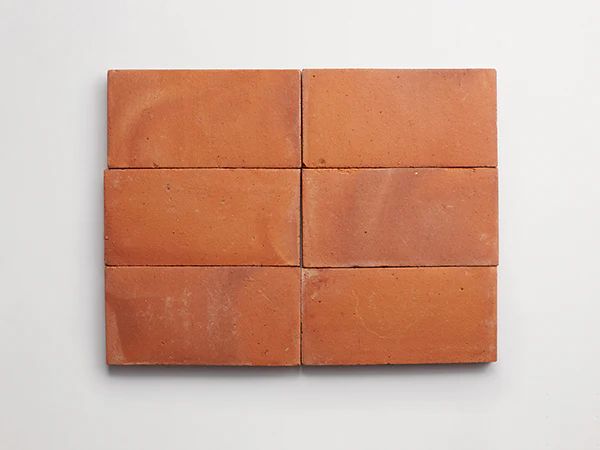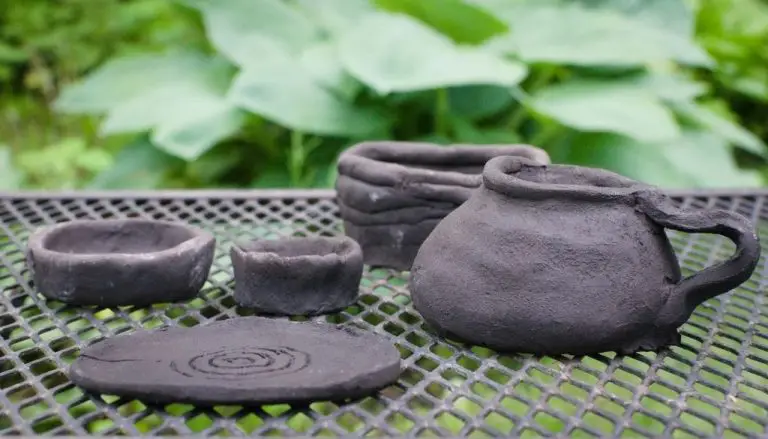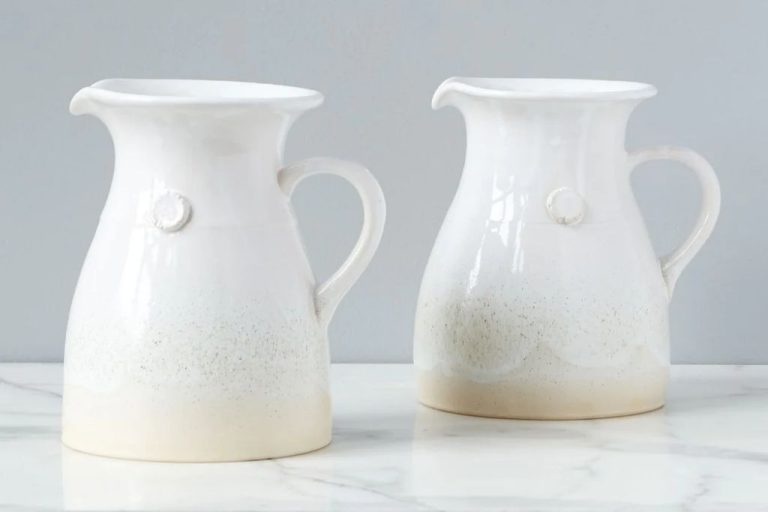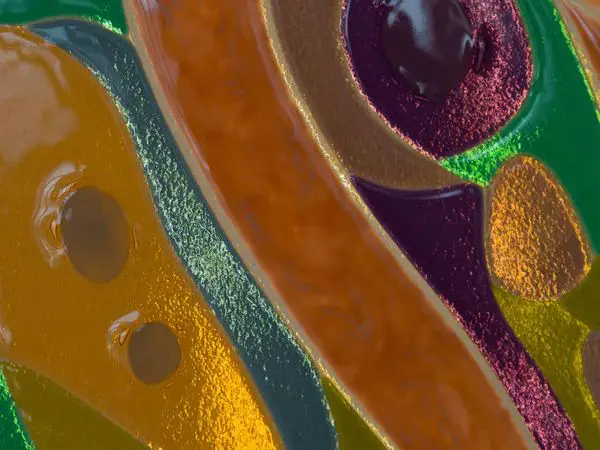Is Terracotta A Clay Tile?
What is Terracotta?
Terracotta is a type of earthenware made from fired clay. The term comes from the Italian words “terra” meaning earth and “cotta” meaning cooked. Terracotta has been used across many ancient civilizations for sculpture, pottery, and construction due to its durability, affordability, and workability.
The earliest known terracotta artifacts come from the Harappan civilization in ancient India and date back to around 3000 BCE. Terracotta was widely used in ancient Mesopotamia, Greece, and Rome for pottery, figurines, and roof tiles. Its popularity expanded in the medieval Islamic world for colorful glazed tiles on mosques and palaces. In the 15th century, the Della Robbia family in Florence pioneered colorful glazed terracotta sculpture. https://en.wikipedia.org/wiki/Terracotta
Over the centuries, terracotta continued to be valued for its durability, affordability, ability to be molded into various shapes, and potential for glazing. It has served both functional and decorative purposes in architecture, sculpture, pottery, bricks, and tiles across many cultures.
Terracotta Tile Manufacturing Process
The manufacturing process for terracotta tiles involves several key steps:
Clay preparation – The clay used to make terracotta tiles needs to be cleaned and prepared into an even consistency. This involves removing any impurities and ensuring the clay has the right moisture content to be malleable for molding.How Italian Terracotta Tiles are Made in 5 (Easy?) Steps
Molding and shaping – The prepared clay is pressed into molds to form the desired tile shapes. The tiles may be pressed by hand or machine. Complex tile designs require hand-crafting in plaster molds.
Drying and firing – After being molded, the tiles are air-dried to remove moisture. They are then fired in a high-temperature kiln, generally around 2,000°F to 2,400°F. This hardens the clay through vitrification, turning it into terracotta.How are terracotta tiles made? The intense heat causes the tiles to shrink slightly and become rock hard.
The firing process is the most important step that transforms soft clay into durable terracotta tiles. The result is a natural clay product that can last for decades or even centuries.
Properties of Terracotta Tiles
Terracotta tiles have some unique properties that make them a popular flooring choice. Here are some of the key properties to understand:
Appearance
Terracotta tiles have an earthy, rustic look thanks to their terra cotta clay composition. They range from orange/red tones to brown shades. The tiles develop a patina over time as they are exposed to air, light, and traffic. This gives them an antique, Old World appearance that many find desirable for certain decor styles like Tuscan, Spanish, or Mediterranean [1].
Strength and Durability
Fired at high temperatures, terracotta is very dense and hard. Tiles made from terracotta clay are resistant to cracks, scratches, chips, and breakage. With proper installation and care, terracotta tiles can last 50-100 years. The tiles become stronger over time as the clay continues to cure [2].
Porosity

Terracotta is porous and absorbs liquids easily. On one hand, this grip helps prevent slips and falls. But on the other hand, liquids can stain the tiles if not promptly cleaned up. Sealing the tiles after installation creates a protective barrier against stains. But the seal needs reapplication over time as it naturally wears off [3].
Types of Terracotta Tiles
Terracotta tiles come in a variety of types with different properties and uses. Some key categories of terracotta tiles include:
Glazed vs Unglazed
Glazed terracotta tiles have a glass-like coating applied to the surface for extra durability and stain resistance. Unglazed terracotta has the natural reddish-orange clay color exposed. Unglazed tiles are more porous.
Colors and Finishes
Terracotta tiles range from earthy reds to warm browns. Glazed terracotta can also come in shades like blue, green, yellow, and more. Finishes include glossy, matte, textured, crackled, and metallic.
Shapes and Sizes
Common terracotta tile shapes include squares, rectangles, hexagons, and interlocking patterns. Sizes typically range from 1 x 1 inches to 12 x 12 inches. Larger format tiles like 16 x 16 inches are also available.
For more details on types of terracotta tiles, check out this overview.
Benefits of Terracotta Tiles
Terracotta tiles offer many benefits that make them a popular flooring and wall covering choice. Some of the main advantages of terracotta tiles include:
Natural Material: Terracotta tiles are made from natural clay that is fired at high temperatures. This makes them an eco-friendly and sustainable option compared to man-made materials like vinyl or laminate.
Stylish and Versatile: With their rustic, earthy look, terracotta tiles add warmth and character to any space. They come in a huge range of colors, shapes, sizes, and finishes, allowing for versatile design options. Terracotta works well in traditional, Mediterranean, or modern interiors (Ekagroup, 2020).
Durability: Properly installed and cared for, terracotta tiles are extremely durable and can last for decades. The tiles harden over time, developing a protective patina. Their longevity makes them a sound long-term investment (Livspace, 2022).
Temperature Regulation: Terracotta has good thermal conductivity and helps regulate interior temperature. The tiles stay cool in summer and warm in winter. This quality can reduce energy costs for heating/cooling a space.
Drawbacks of Terracotta Tiles
While terracotta tiles offer many benefits, they also have some potential drawbacks to consider:
Porosity
One of the main disadvantages of terracotta tiles is their porosity. Since they are made out of clay, terracotta tiles can absorb a lot of water and moisture (Source). This makes them prone to staining and discoloration over time. To help combat porosity, terracotta tiles are often sealed or glazed.
Weight
Terracotta tiles tend to be heavier than other types of tiles like ceramic or porcelain. This extra weight can make them more difficult to install and may require additional structural support (Source). Their weight also makes terracotta tiles less ideal for upper floors or walls.
Brittleness
While very durable overall, unglazed terracotta tiles are more brittle than glazed varieties. Unglazed tiles can chip or crack if subjected to hard impacts. Sealing the tiles helps make them more resilient.
Staining
The high porosity of terracotta makes it prone to staining, especially from liquids like wine or oil. Sealing the tiles provides some protection, but stains can still occur over time. Using a stain-resistant sealer and prompt cleaning of spills helps minimize staining.
Terracotta Tile Installation
Proper installation is key to ensure terracotta tiles last a long time. Here are some tips on installing terracotta tiles:
Prepare the subfloor by making sure it is clean, dry, and flat. Any uneven surfaces should be filled and leveled. Concrete subfloors should be cured for at least 28 days before tiling. Refer to manufacturer instructions for proper subfloor prep.
Use a latex-modified thinset mortar designed for large format tiles. Make sure to follow instructions and let it slake for 10-15 minutes before applying. Use a notched trowel to spread the mortar evenly across the floor [1].
Press tiles firmly into the mortar bed. Use spacers between tiles for consistent spacing. Tap tiles with a rubber mallet to flatten any high spots.
Select a grout designed for terracotta like an unsanded or polymer-modified grout. Apply grout between tile joints carefully following manufacturer instructions. Clean excess grout off the tile surface with a damp sponge before it dries.
Seal terracotta tiles before and after grouting using a penetrating sealer. Sealing helps protect against moisture and stains. Reapply sealer periodically for continued protection.
Caring for Terracotta Tiles
Terracotta tiles require some special care and maintenance to keep them looking their best. Two of the most important aspects are sealing and cleaning.
Terracotta is porous, so it’s important to apply a sealant periodically to protect the tiles from stains and moisture damage. Experts recommend re-sealing terracotta floors every 1-2 years depending on traffic. Water-based sealers are recommended as they allow the tiles to continue breathing. Make sure to follow the sealant manufacturer’s instructions for application. TilesandMosaics.co.uk recommends doing a “water test” annually to check if re-sealing is needed – splash some water on the tiles and if it soaks in, it’s time to re-seal.
For regular cleaning, terracotta tiles should be mopped weekly using warm water and a mild pH-neutral cleaner. Avoid harsh alkaline or acidic cleaners that can damage the tiles. A mix of warm water and dish soap or neutral cleaner like Marseille soap works well for light cleaning. For a deeper clean, try mixing water with a small amount of white vinegar. After cleaning, dry the tiles thoroughly to prevent water spots and stains. Express Flooring recommends washing with a damp sponge weekly for light maintenance.
Terracotta can be prone to cracks and chips over time. For minor cracks, a terracotta-colored grout or caulk can be used to fill in damaged areas. For chips and more severe cracks, it’s best to consult a tile repair professional.
Cost of Terracotta Tiles
Terracotta tiles can range in price depending on the size, finish, and quality of the tiles. Here’s an overview of the material and labor costs associated with terracotta tile installations:
The material cost for terracotta tiles is typically $2 – $6 per square foot. This can vary based on the size of the tile and the finish. For example, a glazed finish may cost more than an unglazed terracotta tile.[1]
For labor, you can expect to pay $3 – $7 per square foot for installation. The total installation cost will depend on the complexity of the layout and if any special prep work is needed. Experienced tilers charge more per hour than less experienced tilers.[2]
Overall, a typical terracotta tile installation costs $5 – $13 per square foot. This puts terracotta tiles on the more affordable end compared to materials like marble, granite or porcelain which can range from $10 – $50 per square foot installed.
Terracotta vs Clay Tiles
While terracotta tiles and clay tiles are both made from clay, there are some key differences in their composition, manufacturing process, appearance and properties.
In terms of composition, terracotta contains higher iron content, giving it a reddish-orange color when fired. Standard clay tiles have lower iron content and can be fired to a lighter color (Emila America). Terracotta clay also contains more minerals that help make the material more durable and less porous after firing.
The manufacturing process differs as well. Terracotta tiles are fired at a higher temperature, typically over 2,000°F, while regular clay tiles are fired at lower temperatures around 1,800°F. The higher heat hardens terracotta clay more completely. Terracotta tiles are also more likely to be handmade or hand-finished after molding, giving them slightly more character and irregularities (Rustico Tile).
In terms of appearance, terracotta tiles have an earthier, rustic look compared to basic clay tiles due to the higher iron content and artisanal finishing. The additional minerals make terracotta less porous and more durable than regular clay. However, terracotta is also more prone to cracking if exposed to freezing temperatures. Both materials can be used for indoor and outdoor settings.
So in summary, terracotta is a type of clay tile with distinct properties and manufacturing due to its specialized composition and high-temperature kiln firing process.




